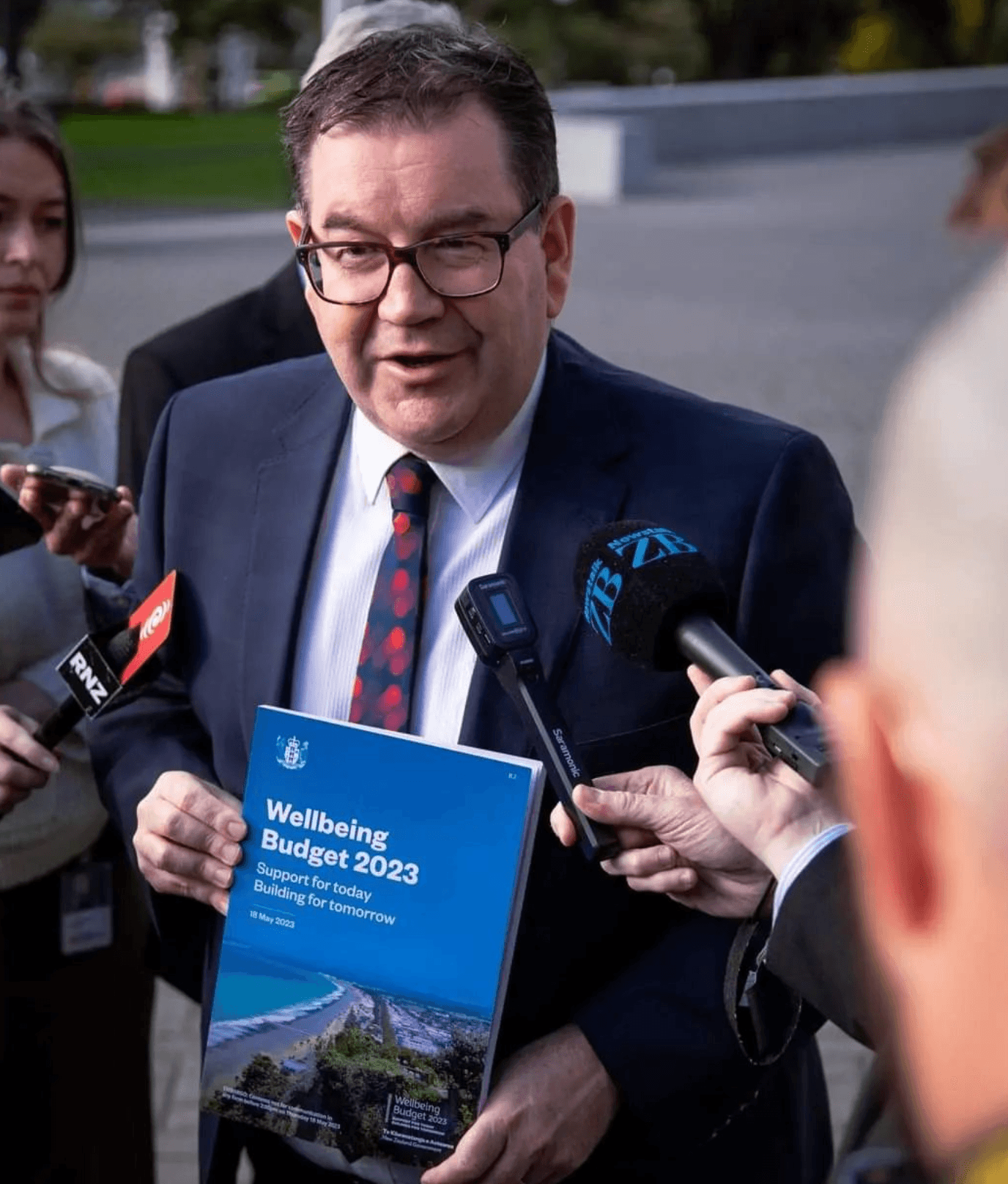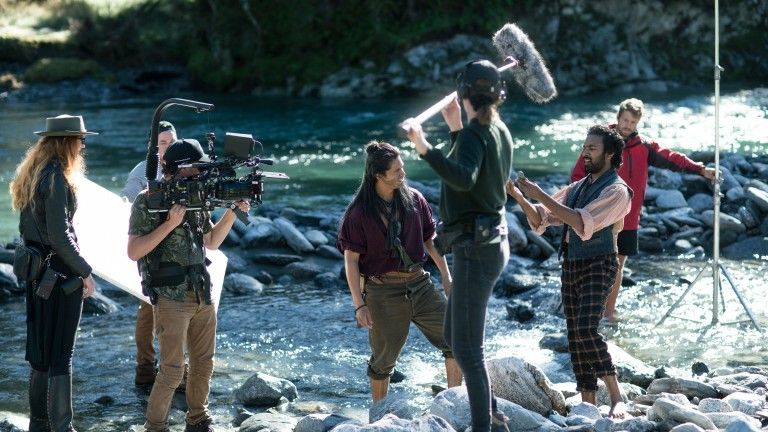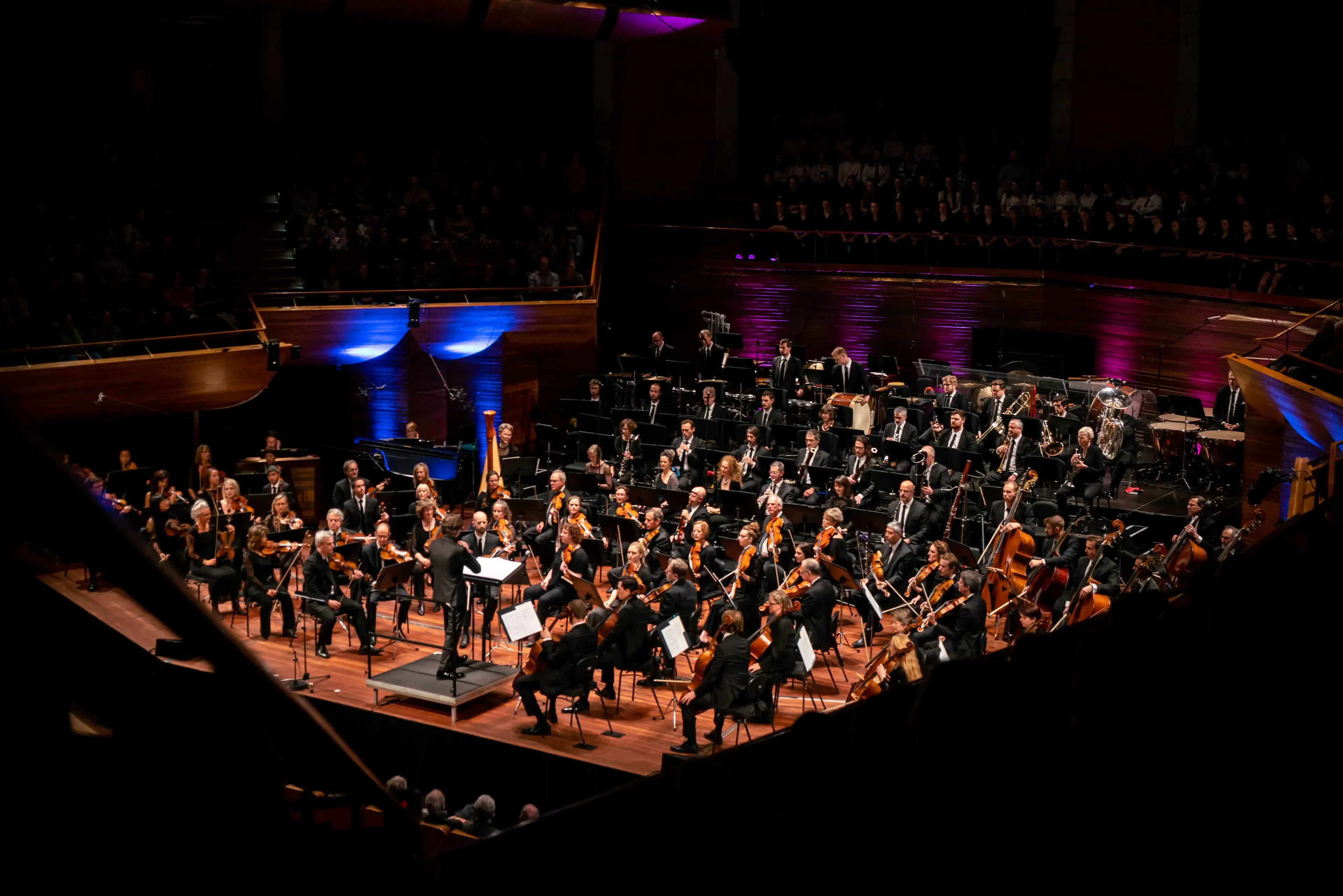Analysis: What Budget 2023 Means For The Arts
What carrots have been dangled in front of the creative community in an election year? Andrew Wood explores what's mentioned - and left out - of this year's Government budget, with reaction from the winners and (potential) losers.

So what does the budget hold for the creative industries?
In general, it’s pretty grim. A forecasted shrinking of household expenditure is always going to be bad for things like the art market and live entertainment.
Tighten that belt, baby - and get out your best brown trousers.
A rise in unemployment well into 2024 is definitely going to be bad for the precariat providing most of the labour that keeps art and creativity afloat in Aotearoa.
The arts, culture and creativity industries receive very few mentions, which is probably no surprise that in a “no-frills budget” these are often - unfairly - regarded as frills.
All projected grants and subsidies as general operating expenditure drop significantly from 2024 to 2027
Given the rhubarb around Creative New Zealand (CNZ) funding, it seems odd that it doesn’t get mentioned specifically.
When asked by The Big Idea, David Pannett, Senior Manager, Strategy & Engagement at CNZ, has this to say about the new budget:
“The arts community is already expecting change from us following our recent series of 24 workshops, to hear the community’s thoughts on the future of arts development in Aotearoa. The next stage of that mahi is underway, working towards a simpler and more accessible arts development programme from 2024. It’s worth noting that these changes are irrespective of funding available and are more about taking a different approach to how CNZ and the sector work together.
“In terms of Budget 2023, we’re thrilled to see that Te Matatini will receive a $34 million boost, and that the Creative Careers pilot programme has been funded for another year. These increases will have a significant impact for our arts communities and are positive for the sector as a whole.
“While CNZ’s baseline funding stays the same for the coming year and is currently budgeted at that level for the years beyond, we were grateful for the one-off funding boost of $22 million back in February 2023, which is being rolled out now through to the end of 2023.
“Our baseline funding makes up about 25-30% of our public funding in a regular year, with the balance coming from the New Zealand Lottery Grants Board. We await their advice on what our lotteries funding will be for the financial year ahead.”
Screen time
National’s concerns about the cosiness of Labour with the lobbying industry do seem to be supported by the grease dealt to some squeaky wheels.
The computer gaming industry was out there lobbying hard for subsidies to bring them into parity with those allotted to the film industry and this was rewarded with a 20% rebate announced in Thursday’s Budget, with $160 million allocated.
Mind you, they’ve earned it. It’s worth noting that in 2021, the gaming industry pumped $7 billion into the NZ GDP. Look at the huge international success of the Lovecraftian game Dredge put out by Christchurch-based company Black Salt Games.
On the other hand, a big fat red flag has been raised over the New Zealand Screen Production Fund, which has been subsumed from the Ministry for Arts, Culture and Heritage (domestic productions) and the Ministry of Economic and Regional Development to its own cross-portfolio risk category and government’s commitment to screen production is under review:
“The New Zealand Screen Production Grant (NZSPG) is an uncapped, on-demand grant that incentivises production work in Aotearoa New Zealand by offering a rebate on qualifying expenditure. There is a risk that funding in addition to what is currently included in the fiscal forecasts may be required in the future.
“The Government is currently undertaking a review of Government investment in the screen sector, with the NZSPG being a focal point. Decisions to change the NZSPG in response to the review could impact on spend from 2025/26.”

The Screen Production and Development Association (SPADA) comments:
“(Thursday's) Budget is not indicative of the NZSPG review outcome - so it’s business as usual for the SPG while we wait for the results of the Government review.
“SPADA understands an announcement on the results of the review is likely to be next month, and we are hopeful the proposed adding of subjective conditions to the local SPG will have been dropped, and that the idea of accessing the SPG incentive along with NZ On Air funding will have been picked up.”
Top dollar for Te Matatini

One of the biggest winners, and rightly so, was Te Matatini kapa haka festival, receiving $34 million for the next two years, which makes it the highest-funded arts service provider, putting it above the New Zealand Symphony Orchestra (NZSO).
This additional funding comes from the $825m allocated to Māori-focused initiatives but prepare for performative pearl-clutching because while Te Matatini funding would rise to just below $20m next year, the NZSO’s will drop to just over $18m.
Te Matatini responded to the news on their website Te Matatini welcoming the boost in funding and calling it an “acknowledgement of the positive impact that Kapa Haka has on our society”.
Te Matatini Chief Executive Carl Ross said “This funding has come at a critical time for our whānau as we look to actively support and recognise the contribution of Kapa Haka to our whānau, hapū and iwi and in our communities.
“Kapa haka is inclusive and we want Kapa Haka to be the drawcard that unites communities, whānau, hapū and iwi to celebrate our diversity and to enjoy being immersed in our unique te ao Māori culture.”
The funding will contribute to the festival’s Mana Motuhake ki te kainga: Matatū, Mataora, Matatini ki te ao vision, allowing it to move beyond the biennial festival model to a sustainably resourced operational model to a regional one, 70% of which will be provided directly to rohe.
Reading between the lines
What may, perhaps, be gleaned from reading these tea leaves is that the Government is signalling a fairly significant shift in cultural focus and priority, which budgetary constraints make a little easier to see.
The huge boost to Te Matatini is not unexpected, falling under Labour’s commitment to recognising and equity for Māori, but the degree of the increase is interesting. It was Te Pāti Māori that identified the NZSO as the comparative bar, so it would be naïve not to wonder if bringing the two into parity isn’t a diplomatic gesture to them as much as a broader signal to Māori.
The modest cut to the NZSO may provoke a hostile reaction from Labour’s older, middle-class supporters – a not inconsiderable demographic.

A similar pattern may be scried in what appears to be the Government mulling over whether to move some of the eggs from film and television production’s basket to game design as the new golden child.
Is the 'Peter Jackson' effect waning? On the one hand, gaming is one of the world’s most lucrative industries these days. On the other, it lacks the glamorous Hollywood cachet and is unlikely to do much to boost tourism the way seeing our landscape in movies did.
Nor does the games industry have a centralised Crown Entity to organise around the way screen production has the NZ Film Commission – though that’s probably only a matter of time (I’m available, ta).
Jesus, Mary and SpongeBob only know what’s going to happen to CNZ, but something surely has to.
All in all - for most of us - it looks like we should adopt the motto of House Stark in Game of Thrones…
“Winter is coming”.